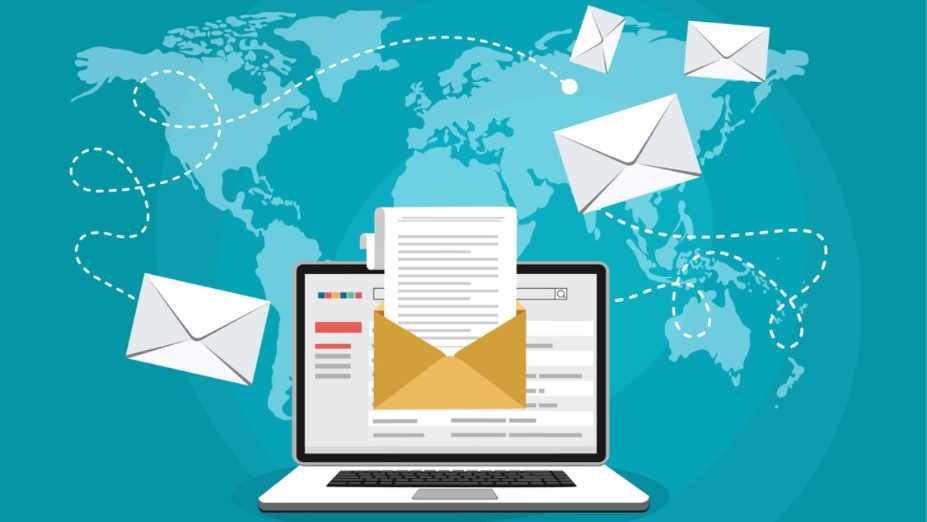Email is still one of the best ways to reach people. In China, more businesses are using email to speak with customers. But just sending messages in English won’t work. You need to use the right words, tone, and culture in your emails. That’s why many companies use traditional Chinese translation services to get their message right.
When your email sounds local, people trust you more. They feel like you understand them. In China, this is very important. Customers want to feel respected. A good translation shows that you care.
In this blog, you will learn how email marketing works in China, and why correct translation plays a big part.
Why Email Still Matters in China
Many people think of China as a country where social media leads. That’s true, but email still has a big role. Business emails are widely used, especially in trade, tech, education, and export work.
For international brands, email is often the first step to reach new buyers or partners. It helps build trust. A good email shows you are serious, clear, and ready to do business.
People in China also like clear emails that save time. They don’t want to read long stories. They want to see what you offer, why it helps them, and what to do next. If your email is short, polite, and in proper Chinese, you already stand out.
The Writing Style Chinese Readers Prefer
Chinese readers value balance in tone. Too casual may seem rude. Too formal may sound cold. Your email should be friendly but respectful. Start with a greeting that shows care. Avoid jokes or slang. These don’t always make sense in Chinese. Also, avoid long sentences. Break them into smaller parts. This helps readers understand your message faster.
Bullet points work well. They help people focus on key details. Also, avoid writing in capital letters. In Chinese, this can look strange or even rude. Use names when possible. “Dear Ms. Lin” feels more respectful than “Hello.” Show that you know who they are. That makes your message feel personal.
Adapting to Local Culture in Your Emails
Culture matters in every part of the email. In China, being polite and showing respect is key. Never rush into selling. First, show your values and why your product matters. Use phrases that express care and harmony. Instead of saying, “Buy now,” say, “We are pleased to share this offer.” Soft language works better.
It’s also good to add a message about working together. Chinese readers respect teamwork. Say things like, “We look forward to growing together.” Also, avoid using numbers like “4” in promotions. It sounds like the word for death in Chinese. Instead, use numbers like “8” or “6,” which bring luck. These small changes make your email feel local and thoughtful.
Subject Lines That Catch Eyes in China
In email marketing, the subject line decides if someone opens the message. This is true in China too. But the style must change. Western brands often use humor or direct language. In China, people prefer soft and clear subject lines. Don’t say, “Don’t miss this deal!” Instead, say something like, “A special offer prepared for you.”
Also, add the person’s name if you can. That makes it more personal. Use fewer than 20 characters in Chinese, as longer lines may not display well on phones. Adding the brand name is also smart. It builds trust. People are more likely to open the email if they know who it’s from.
Visual Design and Font Choices for Chinese Readers
The way your email looks also matters. In China, people are used to reading from top to bottom and right to left in older texts. But now, most emails follow a left-to-right format like English. Still, the font must be clear. Use standard Chinese fonts like Microsoft YaHei or SimSun. These are easy to read on all screens.
Don’t use small fonts. Keep size at least 12px. Also, don’t use many colors. Use red for good news or offers. Red means luck in Chinese culture. But use it wisely—too much red can feel too strong. White space is also key. Let your message breathe. Crowded emails feel messy and can be hard to read. Images should load fast and not block the message. Add alt text in Chinese. This helps people understand the picture even if it doesn’t load.
Using Local Expressions and Tone
Chinese has many ways to express the same idea. But not all words fit business emails. That’s why tone is important. The translator must pick words that show care, without sounding too soft. For example, don’t just say, “Thank you.” Say, “We sincerely thank you for your continued support.” It’s longer but feels more polite.
Avoid terms that are too emotional or bold. Instead of saying “Our product is the best,” say “Our product has been trusted by many clients.” This calm tone builds trust. It matches what readers in China expect.
The Importance of Tailored Regional Translations
Not all Chinese-speaking people use the same terms. Mainland China, Taiwan, Hong Kong, and other regions each have small changes in the words they use. For example, some words in Taiwan look different from those in mainland China. People in Taiwan read Traditional Chinese. This means you must change the text for them.
That’s where Taiwan translation services are helpful. These services don’t just switch words. They help adjust for the region’s rules, habits, and reading styles. If your email goes to Taiwan, you should not send the same version meant for mainland readers. Doing that can feel lazy or disrespectful.
Calls to Action That Work in Chinese
At the end of your email, you want the reader to do something. This is your “Call to Action” or CTA. In China, direct CTAs may not work well. You should still guide people clearly but in a softer way. Instead of saying, “Click here to buy,” you might say, “Learn more about our offer.” Or, “Visit our page for full details.” Use buttons that stand out. Red or gold work well. Make sure the text is short—just a few words in Chinese.
Also, place the CTA above the fold. This means people can see it without scrolling down. Always test your email to check this works on mobile.
Checking the Final Email Before Sending
After writing and translating your email, always review it. Don’t send it right away. Read it again after an hour or two. Look for small errors. Better yet, show it to someone who speaks Chinese well. Ask them, “Does this sound local?” If anything feels odd, fix it.
Make sure:
- All names are spelled right
- Times and dates follow the local format
- Phone numbers and addresses work for the area
- The CTA leads to a Chinese-friendly webpage
These checks help you avoid mistakes that could hurt your brand.
Final Words!
Email marketing can help your business grow in China. But to do it right, you must speak the way local people do. This means more than just words. It means tone, design, and even culture. When you take the time to write emails that fit China’s style, your message has a better chance to succeed. A well-translated email shows that you care and are ready to connect in the right way.





